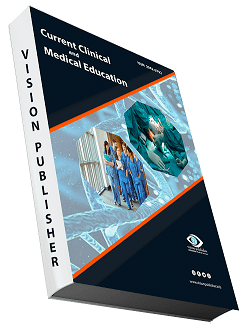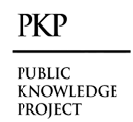Modern methods for extraction and purification of colicin produced from Escherichia coli
Keywords:
Escherichia coli, colicin, ammonium sulfate, dialysis, ultrafiltration, SDS Page polyacrylamideAbstract
The current study aimed to extract and purify colicin extracted from Escherichia coli (E,coli). One isolate was selected from 10 bacterial isolates obtained from Hilla Teaching Hospital in Hilla Governorate / Babylon, and all diagnostic and biochemical tests were carried out to ensure the purity of the bacterial isolates and to investigate their production of bacteriocin. Bacteriocin was extracted by centrifuging the bacterial suspension with a cooling centrifuge and concentrated by ammonium sulfate at a saturation rate of 70% and then by dialysis and ultrafiltration to get clear of the largest possible percentage of salts and impurities present in the solution. The protein extract was purified by SDS-PAGE polyacrylamide technique and its purity was confirmed by the appearance of a single band when electrophoresis was performed on polyacrylamide gel in the presence of SDS denaturants. The results of protein characterization showed that the molecular weight by electrophoresis on polyacrylamide gel was estimated to be 66 kDa. It was shown by matching the molecular weight of the protein with the molecular weights of standard proteins that the protein is colicin.
Downloads
References
AL-Dhumaina, T. F. H. (2009). "EXTRACTION AND PURIFICATION OF COLICIN PRODUCED BYESCHERICHIA COLI ISOLATED FROM URINARY TRACT INFECTION." Journal of Techniques 22(4).
Borzenkov, V., et al. (2014). "Obtaining bacteriocins by chromatographic methods." Advances in Bioscience and Biotechnology 5(05): 446-451.
Bourdineaud, J. P., et al. (1990). "In vivo properties of colicin A: channel activity is voltage dependent but translocation may be voltage independent." Proceedings of the National Academy of Sciences 87(3): 1037-1041.
Bradley, D. E. (1991). "Colicinogeny of O55 EPEC diarrhoeagenic Escherichia coli." FEMS microbiology letters 90(1): 49-52.
Burgess, R. R. (2009). "Protein precipitation techniques." Methods in enzymology 463: 331-342.
Cascales, E., et al. (2007). "Colicin biology." Microbiology and molecular biology reviews 71(1): 158-229.
Cotter, P. D., et al. (2013). "Bacteriocins—a viable alternative to antibiotics?" Nature Reviews Microbiology 11(2): 95-105.
Dankert, J., et al. (1980). "Reversal by trypsin of the inhibition of active transport by colicin E1." Journal of bacteriology 143(2): 594-602.
Fisher, C. L., et al. (1994). "The role of arginine 143 in the electrostatics and mechanism of Cu, Zn superoxide dismutase: computational and experimental evaluation by mutational analysis." Proteins: Structure, Function, and Bioinformatics 19(1): 24-34.
Géli, V. and H. Bénédetti (1994). "Insertion of Proteins into Membranes A Survey." Membrane Biogenesis: 21-69.
Gratia, A. (1925). "On a remarkable example of antagonism between two strains of hummingbird." Comptes Rendus Biologies (CR BIOL) 93: 1040-1042.
Hada, V., et al. (2023). "Nanoantibiotic effect of carbon-based nanocomposites: epicentric on graphene, carbon nanotubes and fullerene composites: a review." 3 Biotech 13(5): 147.
Harman, G., et al. (1993). "Chitinolytic enzymes of Trichoderma harzianum: purification of chitobiosidase and endochitinase." Phytopathology 83(3): 313-318.
Herschman, H. R. and D. R. Helinski (1967). "Purification and characterization of colicin E2 and colicin E3." Journal of Biological Chemistry 242(22): 5360-5368.
Housden, N. G. and C. Kleanthous (2011). "Thermodynamic dissection of colicin interactions." Methods in enzymology 488: 123-145.
Kelley, K. T. (2004). "How peritoneal dialysis works." Nephrology nursing journal 31(5): 481.
Kirkup, B. C. and M. A. Riley (2004). "Antibiotic-mediated antagonism leads to a bacterial game of rock–paper–scissors in vivo." Nature 428(6981): 412-414.
Kleanthous, C. and D. Walker (2001). "Immunity proteins: enzyme inhibitors that avoid the active site." Trends in biochemical sciences 26(10): 624-631.
Lazdunski, C. J., et al. (1998). "Colicin import into Escherichia coli cells." Journal of bacteriology 180(19): 4993-5002.
Leroy, F. d. r. and L. De Vuyst (1999). "Temperature and pH conditions that prevail during fermentation of sausages are optimal for production of the antilisterial bacteriocin sakacin K." Applied and Environmental Microbiology 65(3): 974-981.
Lü, X., et al. (2014). "Purification of novel bacteriocin produced by Lactobacillus coryniformis MXJ 32 for inhibiting bacterial foodborne pathogens including antibiotic-resistant microorganisms." Food control 46: 264-271.
Makia, R. S., et al. (2013). "Detection of plasmid DNA profile in bacterial and fungal isolates from catheterized patients and its relation with antibiotic susceptibility." Journal of Biotechnology Research Center 7(2): 52-62.
MURIANA, P. M. and J. B. LUCHANSKY (1993). Biochemical methods for purification of bacteriocins. Bacteriocins of lactic acid bacteria, Elsevier: 41-61.
Neff, D. N. and A. Bernstein (1976). "Purification and physical characterization of colicin 0 111." Archives of Biochemistry and Biophysics 176(1): 144-153.
Neuhoff, V., et al. (1988). "Improved staining of proteins in polyacrylamide gels including isoelectric focusing gels with clear background at nanogram sensitivity using Coomassie Brilliant Blue G‐250 and R‐250." Electrophoresis 9(6): 255-262.
Richmond, V. L., et al. (1985). "Treatment of dialysis membranes for simultaneous dialysis and concentration." Analytical biochemistry 145(2): 343-350.
Ryan, B. J., et al. (2023). Protein Extraction and Purification by Differential Solubilization. Protein Chromatography: Methods and Protocols, Springer: 349-368.
Schleif, R. F. and P. C. Wensink (2012). Practical methods in molecular biology, Springer Science & Business Media.
Simpson, R. J. (2010). "Rapid coomassie blue staining of protein gels." Cold Spring Harbor Protocols 2010(4): pdb. prot5413.
Yaghoubi, A., et al. (2020). "The bacterial instrument as a promising therapy for colon cancer." International journal of colorectal disease 35: 595-606.
Yang, R., et al. (1992). "Novel method to extract large amounts of bacteriocins from lactic acid bacteria." Applied and Environmental Microbiology 58(10): 3355-3359.
Yu, A. C., et al. (2014). "Monitoring bacterial growth using tunable resistive pulse sensing with a pore-based technique." Applied microbiology and biotechnology 98: 855-862.

Downloads
Published
How to Cite
Issue
Section
License

This work is licensed under a Creative Commons Attribution 4.0 International License.
Current Clinical and Medical Education













